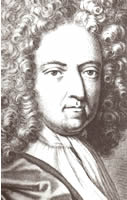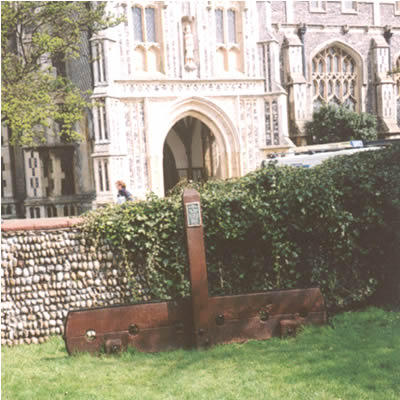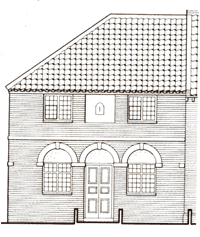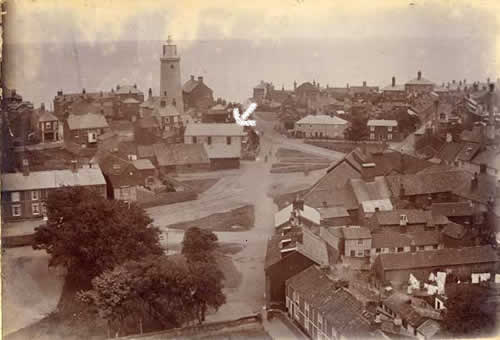The Great Secession
Thomas Gardner (in his Historical Account of Dunwich, Blythburgh and Southwold 1754) gives an account of the breakaway of Independents from St Edmund’s Church. They were ‘Independent’ in the sense that, whilst they wished to remain in the national church, they did not wish to be under the rule of the bishops or be restricted by the Book of Common Prayer.
He explains that Master Sharpen, Rector of Shadingfield and Curate of Stoven, who lived at Sotterley, took for some time a service at Southwold only once a month. The Independents were allowed free use of the Church every Sunday. On the fourth Sunday, Sharpen and the Independent Minister both celebrated divine service, “….he that entered the Church first officiated first, the other keeping silence until the Benediction, most of the people attended all the while...”
This went on until the appointment of the Reverend James Petre in 1680 (or thereabouts). He was not prepared “…to allow such irregularities to continue...” (Parliament had, in 1662, re-imposed the Book of Common Prayer as the required form of worship). As a result the Independents were forced to leave the Church and assembled, instead, in a malt house probably at Reydon Corner.
How much reliance can we place in this story?
Gardner was writing over seventy years later and was, in any case, not partial to Nonconformists. If, on the fourth Sunday, most of the congregation attended all the while it may be that they were not, as Gardner suggests, two separate groups but only one.
Suffolk had for long been known as Puritan country. (Chief Justice Wray, in 1556 wrote that “...there were no counties in England so far out of order as Norfolk and Suffolk, the most of them wilful Puritans... varying in all points from the Book of Common Prayer…”
Southwold had had a succession of Puritan vicars, and Robert Selby had been reported to his Bishop for failing to wear a surplice, anathema to Puritans. The next incumbent was Christopher Youngs (1611/1626) “…a preacher of God’s word….” whose children left for New England as a result of religious persecution and later founded Southold on Long Island.
The Town Council paid for the employment of Puritan lecturers, one of whom, Mr. Woodward, was “...silenced at the Restoration...”
And yet, the congregation at Southwold, “…obdurately inclined to dissent…”, persisted in their preference for freer forms of worship and an emphasis on preaching.
By his actions James Petre made himself extremely unpopular in the town as his tomb records. The aftermath was recorded by Daniel Defoe in 1722 when he found only twenty seven worshippers in St. Edmunds Church but six to eight hundred in the Dissenters’ Meeting House, by then in Lorne Road.

Daniel Defoe
St Edmund’s remained at a low ebb and Southwold was reported in 1788 as “...being heathenish in the extreme…”

Replica of the stocks where the Methodist preacher
was pilloried in 1778 - Photo J. Child
On the other hand the Independents flourished, and were joined by the Methodists in 1799.

![]()
![]()
![]()
![]()
![]()
![]()

Above: Former Nonconformist chapel in Mill Lane which was built in 1799 and sold in 1835. This was the predecessor of the Methodist Church in East Green. The Dissenters' Meeting House in Lorne Road was eventually replaced by the current United Reformed Church in the High Street, below.

photo courtesy of J. Child
 View
from the St Edmund's Church Tower in 1890, looking towards East Green
and St James Green beyond. The new Methodist Church (arrowed) can be seen
apparently under construction. P558
View
from the St Edmund's Church Tower in 1890, looking towards East Green
and St James Green beyond. The new Methodist Church (arrowed) can be seen
apparently under construction. P558